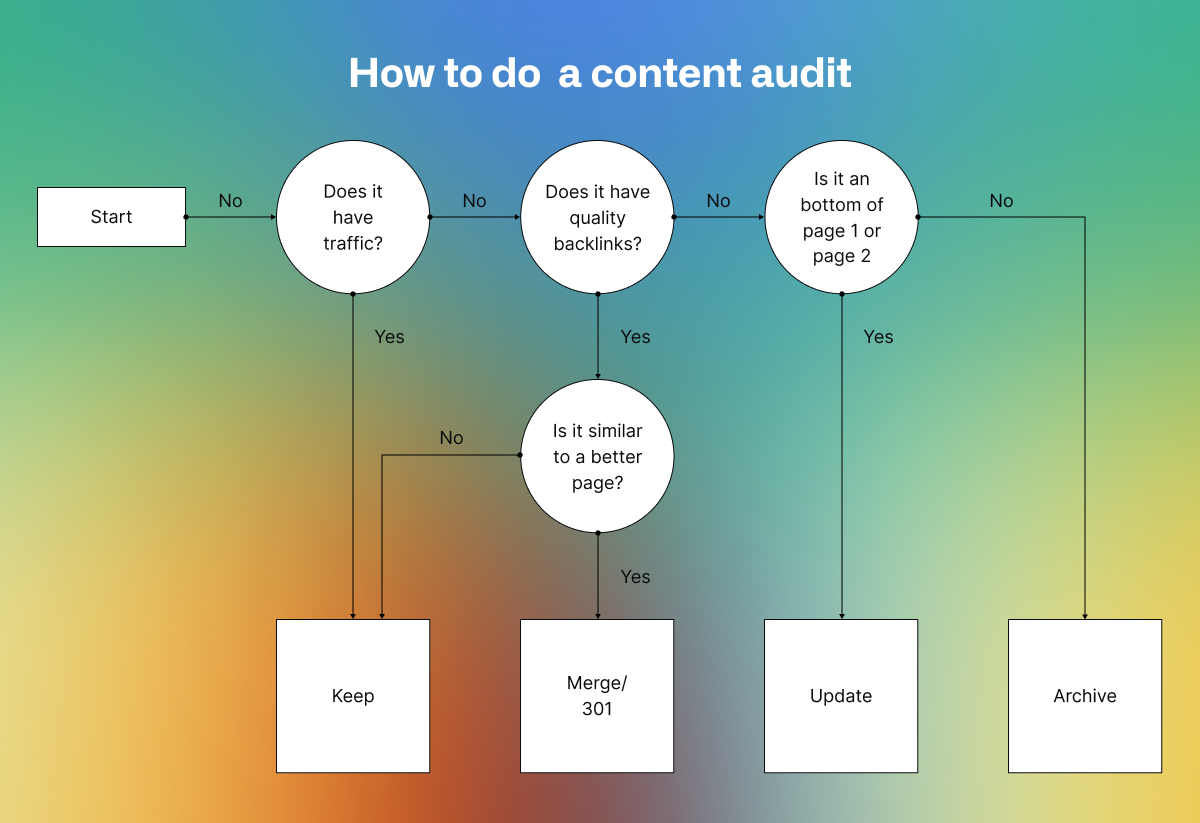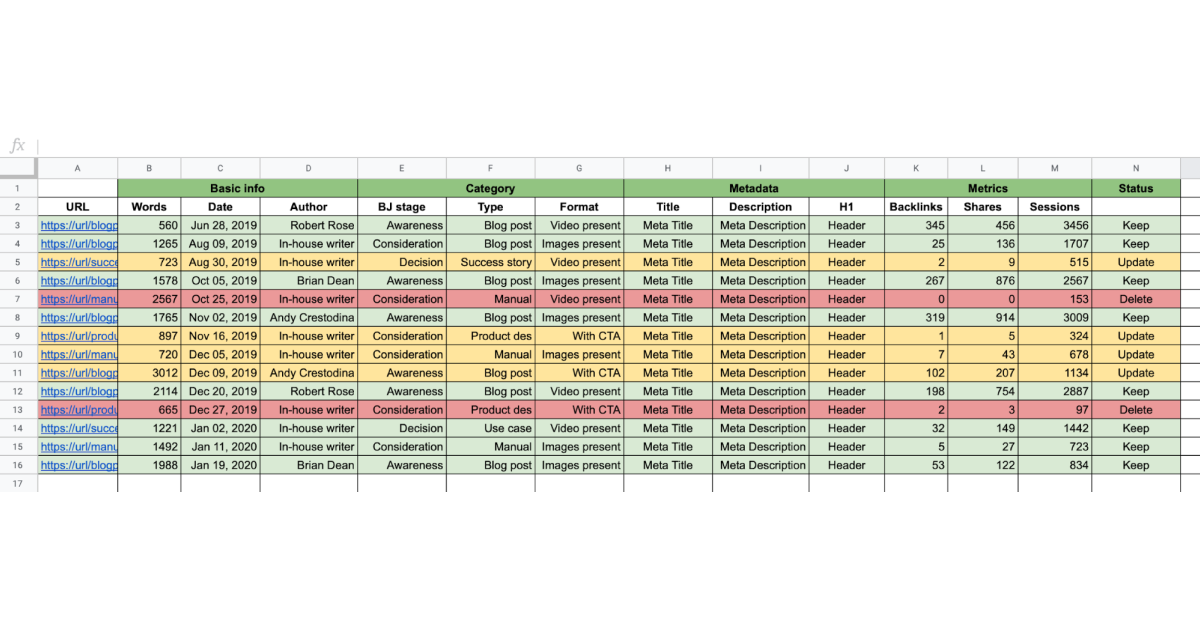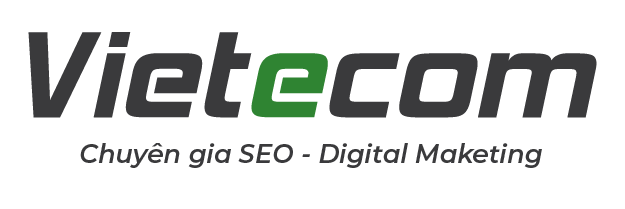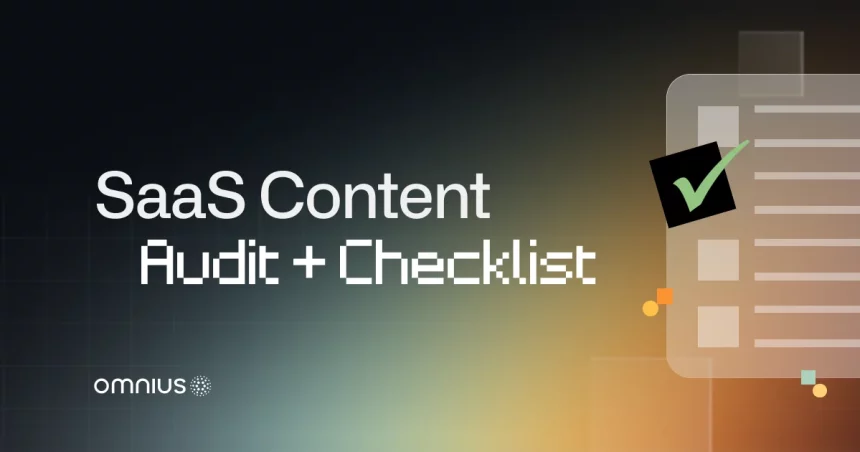As your content production expands, it becomes crucial to monitor its growth, assess its performance, and gauge the value it delivers to your audience.
Undertaking a content audit is instrumental in steering your strategy towards more efficient and effective content creation and better performance.
Yet many SaaS businesses fail to execute it properly, slowing their growth drastically.
This article will guide you through the SaaS Content Audit process to help you propel your content strategy to new heights and make your content outstanding.
BONUS: We’ve included the only content update checklist that will help you simplify your update process and increase blog’s performance.
Let’s dive into it.
SKIP TO THE CONTENT UPDATE CHECKLIST 👇
What Is a SaaS Content Audit?
A content audit is a process of assessing and reviewing your website’s content to make it better performing and answering your readers’ needs/queries.
It can cover all the content on your website, from the written content on your blog to the uploaded photos and videos.
It all depends on what you want to improve initially.
Finding any areas that require improvement and developing a plan to address them are the two main objectives of a content audit.
Here are some key facets that a website content audit includes checking:
🎯 Originality, uniqueness, and the value of the content.
🎯 Conversions and lead generation performance.
🎯 SEO performance and ranking for targeted keywords.
🎯 Grammar and spelling accuracy.
🎯 UX and UI improvements within your content
🎯 Identification and rectification of broken links, images, and other elements.
🎯 Relevance to trends within your industry.
Why Is SaaS Content Audit Important?
Here are some of the benefits of why SaaS content audit is important:
- Optimize Content Relevance – SaaS content audits ensure that the material on your website remains pertinent and valuable to your audience. You can refine your strategy by identifying outdated or irrelevant content to stay aligned with industry trends and customer needs.
- Improve Conversions – By analyzing the effectiveness of your existing content in guiding users through the conversion funnel, you can identify areas for improvement, refine call-to-actions, and optimize content to facilitate user conversions better, ultimately boosting your overall growth.
- Enhance SEO Performance – You can enhance your website’s visibility and ranking in search engine results by identifying SEO issues such as broken links, non-optimized pages, or poor metadata.
- Maximize Content ROI – By identifying high-performing content and understanding what resonates with your audience, you can strategically allocate resources to create more of the content that yields optimal results.
Who Should Conduct a SaaS Content Audit?
Usually, one or more marketing team members carry out a SaaS content audit.
Because it takes so long, some people would rather hire a third-party SaaS marketing agency to handle the task.
Or if you outsource a content strategist, they might help you solve this issue faster, so you don’t need to do the laborious work of conducting the audit in-depth.
However, it’s a fairly straightforward process that anyone with an attention to detail, familiarity with your content strategy, and the proper techniques could complete.
What Should Content Audit Include?
When undertaking a content audit tailored for a SaaS website, it becomes imperative to assess each URL meticulously, charting the optimal course of action.
The overarching objective is to enhance every blog post’s overall quality and relevance, thereby augmenting the site’s SEO performance.
Effectively executing a content audit involves the following key steps:
✅ Identify gaps that you can improve in the technical aspects of your content performance, such as user experience, page speed, on-page SEO performance, and metadata.
✅ To make it easier for you to track its improvements later, documenting the existing content and its current performance is vital. This includes identifying topics with the highest search volume, understanding user queries, and strategizing improvements to better assess your current standing and subsequent enhancements.
✅ Gaps you can improve to evaluate the ongoing relevance and currency of each piece of content in your repository.
✅ Pinpoint gaps within your content strategy, such as areas where content is lacking, so you can strengthen the content clusters or improvements you could implement.
✅ Harness the insights gleaned from the audit to conceptualize fresh content ideas, create an editorial calendar, and plan for improvements.
How to Conduct a SaaS Content Audit in 6 Easy Steps
Conducting a content audit extends beyond the realms of SEO tools, transcending mere dashboards and line graphs.
In this process, stakeholder engagement becomes pivotal for evaluating content quality and formulating a comprehensive strategy for the future.

Performing a SaaS content audit involves systematically evaluating your content assets to ensure they align with business objectives, resonate with your target audience, and contribute to conversions.
1. Evaluate Your Strategy and Establish Your Goals
You should start by quickly reviewing your present objectives and approach.
To navigate this stage effectively, consider the following actions:
✅ Review Your Existing Strategy – Assess the current strategy you’ve employed, especially if you’ve already been engaged in content marketing and are not starting from scratch.
🎯 Identify places where you can improve your content strategy, cover new topics, refresh the data, etc.
✅ Reflect on Previous Goals – Consider the goals you previously optimized for. Reflect on what worked well and where adjustments might be needed.
🎯 Define your new goals and what results you want to get from updating your content. (E.g., Improving the traffic by 100%)
✅ Select Appropriate KPIs – Choose Key Performance Indicators (KPIs) that align with your goals. These metrics should be tailored to effectively assess your content’s performance against your objectives.
🎯 If your goal is to improve lead generation, KPIs may include metrics such as CTA clicks, signups, downloads, etc.
For instance, if you’re expanding your goals beyond targeting search traffic, such as encouraging users to sign up, your focus may shift.
In this case, closely monitor metrics like signups and CTA click rates instead of solely relying on monthly impressions or visitors.
This nuanced approach will provide more relevant insights into your content’s impact on user engagement and conversion rates.
2. Think about What Types of Content You Have
Classify your content into distinct types, such as blog posts, landing pages, case studies, whitepapers, Ebooks, and alternative pages.
Understanding the variety of content will help tailor your audit approach to each type.
Assess the purpose of each content type and the target audience it aims to engage.
This analysis will inform decisions on content optimization and improvements.
For blog posts, include the following details within your audit list:
✅ Content type
✅ Post Title
✅ URL
✅ Targeted keyword
✅ Topic category
✅ Word count
✅ Post and media used
✅ CTA action optimization
3. Take Stock of Your Entire Content Inventory
Now that you’ve identified your content types, the next step is to systematically put this content into a template and its performance metrics to facilitate seamless analysis.
While this phase is undeniably time-intensive, it stands out as the most crucial element of the content audit process, making the effort entirely worthwhile.
Evaluate the performance using metrics like:
✅ Impressions and clicks each month
✅ CTA Clicks
✅ Signup rate
✅ Average position in the Search Engine Results Pages (SERPs)
In the case of videos, track the following:
✅ URL
✅ Views
✅ Watching time
✅ Video format
✅ CTA action
This meticulous approach to content templating and performance assessment ensures a comprehensive understanding of how each piece of content contributes to your goals.
It helps you pave the way for informed decision-making and strategic content refinement.
4. Create an Organized Report
Once you’ve created a template to store your list of updates, you should develop a well-organized report summarizing your content inventory.
Include dedicated sections for different content types, key metrics, and notable observations.
Enhance the report with visual representations such as charts or graphs.

Visuals provide a quick and clear overview, making it easier to identify trends and patterns.
5. Prioritize Your Posts for Update
During your content audit, there’s a high probability that you’ve come across content that isn’t performing as expected or has seen a decline in engagement/conversions.
Identify the posts with the least traffic and those experiencing a drop in search engine rankings, clicks, conversions, etc.
For high-value posts, conduct an individual assessment to determine if their performance aligns with your expectations.
Once you’ve compiled a list of these underperforming posts, consider the appropriate actions:
- Update Information – Evaluate if the posts need updated information to align with modern opinions, technology, or strategies.
- Overhaul or Addition – Assess whether changes in content best practices warrant a significant overhaul or addition to enhance performance.
- Deletion Consideration – Determine if some content is so irrelevant that deletion is a viable option.
Here are some tips to help you prioritize your content for updating:
🎯 Priority one – Articles that have the largest drop in conversion
🎯 Priority two – Articles that had the biggest drop in visits for the last three months
🎯 Priority three – Articles that have the largest drop in impressions
Remember, incorporating the refreshing of blog posts into your strategy is integral, especially after a year of investing in content marketing.
6. Review the Data and Identify Improvements for Each Piece of Content
Now comes the crucial phase of analyzing the gathered data, a task made considerably more manageable with a well-structured content audit report.
Begin by examining posts that demonstrate high performance and that bring you the most value.
Identify commonalities among them to discern patterns contributing to their success.
Subsequently, shift your attention to posts that aren’t performing as well.
Is there a discernible reason for their underperformance, such as:
- Outdated content and data,
- Non-completely covered topic,
- Problems with consuming the content easily,
- Non-CTAs included, etc.
Additionally, it’s imperative to assess the impact of various distribution strategies.
If certain posts show success after being promoted through outbound marketing, consider the merit of continuing this strategy.
SaaS Content Audit Checklist Guide
After providing a brief insight into the technical aspects of your content audit, here’s a comprehensive checklist outlining the step-by-step process for conducting SaaS content audits:
As you go through this checklist, you will uncover a goldmine of related topics and opportunities to expand your content.
Write them down!
And don’t forget to promote your content once you update it.
Our distribution list may be of help there.
The Only Content Update Checklist You’ll Need
1. Improve Your Introduction
2. Improve Your Body Text
Your body text should cover all the sections needed to succinctly provide the value suggested in the title.
The way I look at this, each section should not repeat itself, but when put together, they cover all relevant information.
3. Improve Your SEO
While other improvements mentioned before will improve SEO, here are several ways to increase rankings further.
I am making the assumption that when your blog post was first written, it was keyword-optimized.
4. Improve Your Lead Generation & Conversion
There is an art & science to generating leads from your content.
Your first step is to nail down quality production and topics that matter to your audience.
Here are some other ways to increase leads:
5. Improve Your Conclusion
Your conclusion should reiterate the point’s value and provide logical next steps for the reader to take. It should also make one big ask.
To Wrap It Up
Incorporating well-defined growth strategies into your SaaS content audit is imperative for ensuring your business remains adaptable, evolves effectively, and attracts a broader user base.
The delivery of superior content in strategic locations guarantees your triumph in the long run.
To achieve this, assembling a team of seasoned professionals is essential to elevate your business above the competition.
Entrusting your SEO endeavors to our team promises a comprehensive and systematic approach to organic growth, addressing marketing, design, and development cohesively.
Eager to learn more?
Book a 30-minute call to discover how you can enhance your SEO and content marketing and explore how we can assist you in boosting organic conversions for your company.
Nguồn: omnius.so








